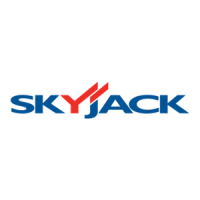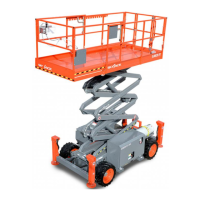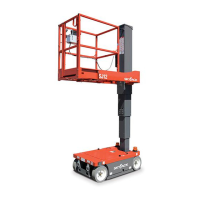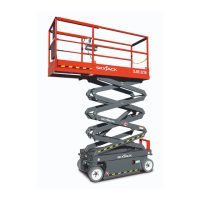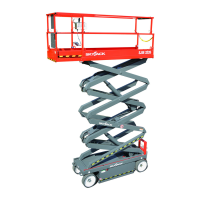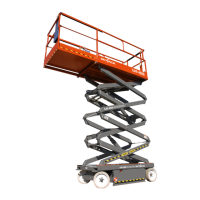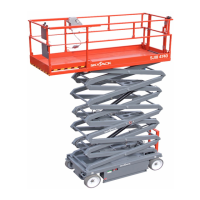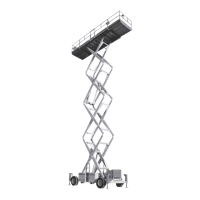Telescopic Boom Series
Models SJ61T & SJ66T
194312
December 2007 Page 7
Section 1 - Scheduled Maintenance Operator’s Responsibility for Maintenance
Operator’s Responsibility for Maintenance
Maintenance and Inspection Schedule
The actual operating environment of the work platform
governs the use of the maintenance schedule. The
inspection points covered in Table 1.2 Pre-Delivery /
Maintenance Inspection Checklist. Maintenance and
lnspection Checklist, indicates the areas of the aerial
platform to be maintained or inspected and at what
intervals the maintenance and inspections are to be
performed.
Owner’s Annual Inspection Record
It is the responsibility of the owner to arrange
quarterly and annual inspections of the aerial platform.
Table 1.1 Owner’s Annual Inspection Record. Owner’s
Annual lnspection Record is to be used for recording the
date of the inspection, owner’s name, and the person
responsible for the inspection of the work platform.
Replacement Parts
Use only original replacement parts. Parts such
as batteries, wheels, railings, etc. with weight and
dimensions different from original parts will affect
stability of the aerial platform and must not be used
without manufacturer’s consent.
All replacement tires must be of the same size and load
rating as originally supplied tires; to maintain safety and
stability of aerial platform.
Consult SKYJACK’s Service Department for optional
tires specications and installation.
WARNING
Any unit that is damaged or not operating
properly must be immediately tagged and
removed from service until proper repairs
are completed.
Maintenance and Service Safety Tips
Maintenance and repair should only be performed by
personnel who are trained and qualied to service this
aerial platform.
All maintenance and service procedures should be
performed in a well lighted and well ventilated area.
Anyone operating or servicing this aerial platform
must read and completely understand all operating
instructions and safety hazards in this manual and
operating manual.
All tools, supports and lifting equipment to be used
must be of proper rated load and in good working order
before any service work begins. Work area should be
kept clean and free of debris to avoid contaminating
components while servicing.
All service personnel must be familiar with employer
and governmental regulations that apply to servicing
this type of equipment.
Keep sparks and ames away from all ammable or
combustible materials.
Properly dispose of all waste material such as lubricants,
rags, and old parts according to the relative law
provisions obtaining in the country.
Before attempting any repair work, turn Battery
Disconnect Switch to “ " off position.
Preventive maintenance is the easiest and least
expensive type of maintenance.

